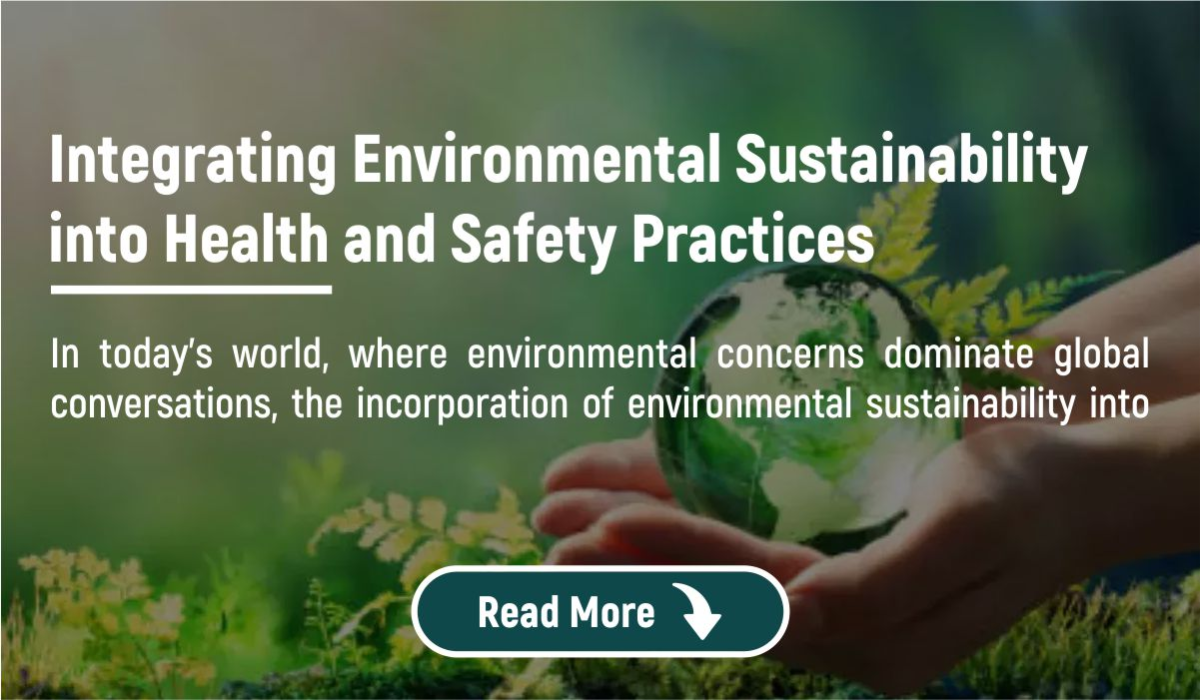
Green HSE: Integrating Environmental Sustainability into Health and Safety Practices
Introduction:
In today's world, where environmental concerns dominate global conversations, the incorporation of environmental sustainability into health and safety practices has gained unprecedented importance. This shift towards "Green HSE" underscores an increasing recognition of the interdependence between workplace safety, human well-being, and environmental health. This article delves into the significance of Green HSE, its advantages, and practical approaches for organizations seeking to adopt a more sustainable approach to health and safety.
The Interconnection of Health, Safety, and the Environment:
Traditionally, health and safety efforts have primarily focused on shielding workers from immediate physical dangers. However, a broader outlook acknowledges that the work environment itself plays a crucial role in long-term well-being. Green HSE acknowledges the inseparable connection between a healthy environment and the overall health and safety of employees.
Benefits of Green HSE:
Reduced Environmental Impact: Integration of Green HSE practices aids in curtailing a company’s environmental footprint, fostering resource conservation, waste minimization, and emission reduction.
Enhanced Employee Well-being: A healthier environment fosters improved employee health and morale. Clean air, natural light exposure, and sustainable practices contribute to a more positive workplace ambiance.
Regulatory Compliance: Many jurisdictions are adopting stringent environmental regulations. Green HSE ensures that organizations not only comply with these standards but surpass them, demonstrating a commitment to sustainable operations.
Cost Savings: Sustainable practices often translate into resource efficiency, diminished energy usage, and lower operational expenses, rendering Green HSE not only environmentally conscious but also economically prudent.
Practical Strategies for Green HSE Implementation:
Environmental Risk Assessments: Conduct comprehensive evaluations to identify and mitigate environmental risks alongside conventional safety hazards, ensuring a holistic understanding of workplace threats.
Waste Reduction and Recycling Programs: Implement strategies to reduce waste and establish recycling initiatives to minimize the environmental impact of daily operations, including proper disposal of hazardous materials.
Energy Efficiency Measures: Invest in energy-efficient technologies, embrace renewable energy sources, and adopt practices aimed at reducing overall energy consumption within the workplace.
Employee Engagement and Training: Cultivate a culture of environmental stewardship through employee education and engagement initiatives. Enhanced understanding of the correlation between individual actions and environmental impact encourages support for sustainability endeavors.
Supply Chain Sustainability: Extend Green HSE principles to the supply chain by collaborating with environmentally conscious suppliers, ensuring adherence to sustainable practices throughout the value chain.
Conclusion:
Green HSE embodies a comprehensive approach to workplace well-being by recognizing the interconnectedness of human health, safety, and environmental sustainability. As organizations increasingly prioritize corporate social responsibility, the integration of Green HSE practices emerges as a strategic necessity. Embracing a sustainable approach to health and safety not only safeguards the planet for future generations but also fosters a safer, healthier, and more resilient workplace today.
NIST Global delivers cutting-edge Environmental Sustainability services to various industrial sectors across PAN India locations. Committed to excellence and safety, we leverage our expertise to ensure that businesses and organizations uphold the highest standards of Health, Safety & Environment.
